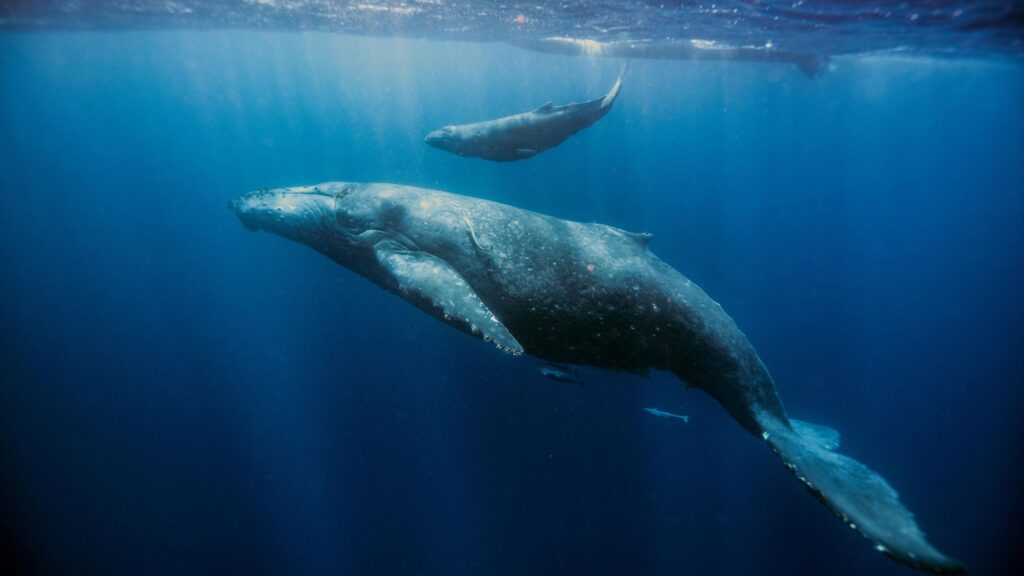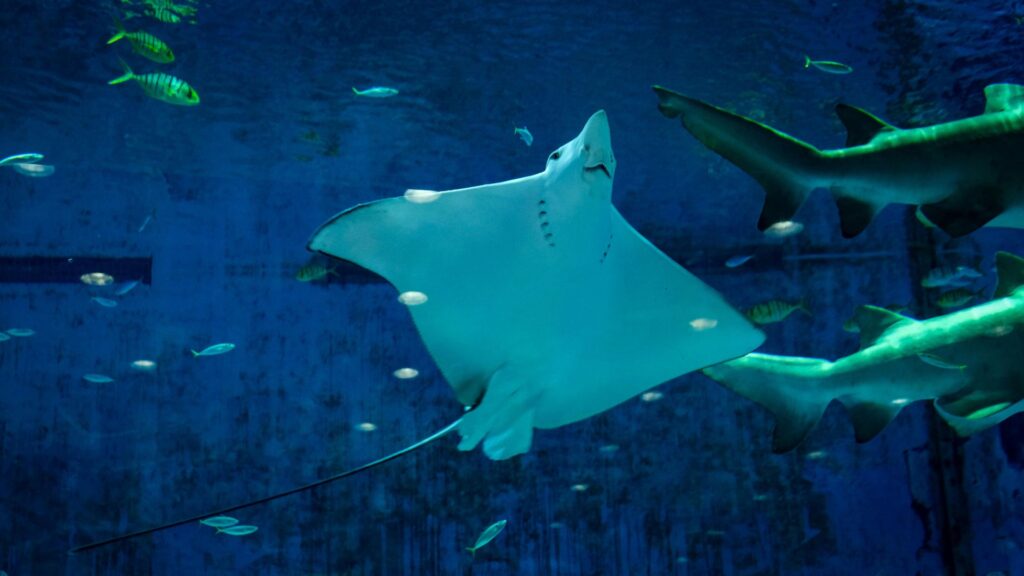Understanding the vital role of sea animals in ecosystems is paramount for safeguarding the health of our planet’s oceans and the biodiversity they support. Sea animals, ranging from microscopic plankton to massive whales, play interconnected roles that maintain the delicate balance of marine ecosystems. They contribute to the maintenance of biodiversity by inhabiting various niches and supporting complex food webs. For instance, phytoplankton, as primary producers, form the foundation of marine food chains, while apex predators like sharks help regulate prey populations, preventing overgrazing of critical habitats.
Additionally, sea animals are crucial for the regulation of the carbon cycle, with marine plants absorbing carbon dioxide through photosynthesis, thus mitigating climate change impacts. However, these invaluable contributions face myriad threats, including pollution, overfishing, and climate change. Human activities such as plastic pollution and chemical runoff degrade marine habitats, endangering sea animals and their ecosystems. Overfishing disrupts food chains and depletes fish stocks, leading to cascading ecological effects.
Moreover, climate change-induced phenomena like ocean acidification and coral bleaching further imperil marine life. To address these challenges, concerted conservation efforts are imperative. Establishing marine protected areas, implementing sustainable fishing practices, and promoting education and awareness are essential steps towards safeguarding sea animals and their habitats. By recognizing and protecting the importance of sea animals, we can ensure the resilience and sustainability of our oceans for generations to come.
Sea Animals Are Important
Furthermore, the conservation of sea animals is not only crucial for the health of marine ecosystems but also for the well-being of human societies. Healthy oceans support diverse fisheries, tourism industries, and coastal communities, providing food security and economic opportunities for millions of people worldwide. By preserving sea animals and their habitats, we can maintain these invaluable ecosystem services while safeguarding the natural wonders of our oceans for future generations to enjoy.
Additionally, recognizing the importance of sea animals fosters a deeper connection with nature and promotes a sense of responsibility towards environmental stewardship. Each individual has a role to play in the protection of marine life, whether through reducing plastic consumption, supporting sustainable seafood choices, or participating in local conservation initiatives. Ultimately, by understanding and valuing the vital role of sea animals in ecosystems, we can work together to create a more sustainable and harmonious relationship with the oceans that sustains both life beneath the waves and life on land.
Table of Contents About Why Sea Animals Are Important
Why are sea animals important for the environment

Sea animals are paramount for the health and sustainability of the environment due to their multifaceted roles within marine ecosystems. Firstly, they contribute significantly to the maintenance of biodiversity, forming intricate food webs and supporting a plethora of habitats. From microscopic plankton to apex predators like sharks, each species plays a vital role in the balance and resilience of oceanic ecosystems. Moreover, sea animals are integral to the regulation of global processes such as the carbon cycle.
Marine plants like phytoplankton produce oxygen through photosynthesis, while various organisms sequester carbon dioxide, helping to mitigate climate change. Furthermore, sea animals serve as indicators of ecosystem health, reflecting the overall well-being of marine environments. Their presence or absence can signify shifts in oceanic conditions, making them crucial subjects for scientific research and monitoring efforts.
Additionally, many sea animals provide essential services to humans, including food, pharmaceuticals, and recreational opportunities, highlighting their economic and cultural significance. However, despite their importance, sea animals face numerous threats, including habitat destruction, pollution, overfishing, and climate change. Therefore, it is imperative to recognize the significance of sea animals for the environment and implement robust conservation measures to ensure their continued survival and the preservation of marine ecosystems for future generations.
Conservation efforts aimed at protecting sea animals and their habitats are essential for safeguarding marine biodiversity and ecosystem stability. Establishing marine protected areas (MPAs) and implementing sustainable fishing practices are key strategies for mitigating anthropogenic impacts on sea animal populations. MPAs serve as sanctuaries where marine life can thrive without the pressures of human exploitation, allowing for the recovery of depleted populations and the preservation of critical habitats.
Additionally, promoting sustainable fishing practices, such as implementing catch limits, regulating fishing gear, and enforcing seasonal closures, helps ensure the long-term viability of fish stocks and minimizes the collateral damage to non-target species and ecosystems. Education and awareness campaigns are also vital components of conservation efforts, empowering individuals to make informed choices and advocating for policy changes that prioritize the protection of sea animals and their habitats.
By recognizing the importance of sea animals for the environment and taking proactive steps to conserve them, we can promote the health and resilience of marine ecosystems and secure the well-being of both present and future generations.
Impact of sea animals on food chains
Sea animals play a crucial role in shaping and maintaining complex food chains within marine ecosystems. From microscopic plankton to massive predators like sharks and whales, each species occupies a specific niche in the intricate web of life beneath the waves. At the base of the food chain, phytoplankton, tiny photosynthetic organisms, form the primary source of energy by converting sunlight into organic matter through photosynthesis. Zooplankton, including krill and small fish, feed on phytoplankton, transferring this energy to larger predators like fish, seals, and marine birds.
These intermediate consumers, in turn, become prey for apex predators such as sharks and orcas. Each link in the food chain is essential for the transfer of energy and nutrients throughout the ecosystem, sustaining the diverse array of life found in the ocean. Additionally, the interactions between different species within the food web help regulate population dynamics, preventing any one species from becoming overly dominant and maintaining a balance of biodiversity.
Furthermore, disruptions or declines in populations at any level of the food chain can have cascading effects, impacting entire ecosystems. For example, overfishing of large predators can lead to a proliferation of their prey species, causing imbalances in lower trophic levels and ultimately destabilizing marine ecosystems. Thus, the impact of sea animals on food chains is not only vital for the survival of individual species but also for the overall health and resilience of ocean ecosystems.
Threats to marine life and ecosystems
Marine life and ecosystems face a myriad of threats that jeopardize their health and sustainability. One of the most pressing challenges is pollution, which manifests in various forms such as plastic debris, chemical runoff, and oil spills. These pollutants not only contaminate the water but also disrupt the delicate balance of marine ecosystems, impacting everything from plankton to apex predators. Overfishing poses another significant threat, as unsustainable fishing practices deplete fish stocks and disrupt marine food webs.
This not only affects the abundance of fish but also has cascading effects on other species dependent on them for food. Additionally, climate change exacerbates these threats, leading to rising sea temperatures, ocean acidification, and more frequent extreme weather events. Coral reefs, crucial marine habitats teeming with life, are particularly vulnerable to bleaching due to warmer waters, resulting in widespread habitat loss. Furthermore, the acidification of oceans impairs the ability of marine organisms, such as shellfish and corals, to build their calcium carbonate structures, threatening their survival.
These cumulative pressures on marine life and ecosystems highlight the urgent need for concerted conservation efforts to mitigate the impacts of human activities and ensure the resilience of our oceans for future generations.
In addition to these primary threats, habitat destruction, caused by activities such as coastal development and bottom trawling, further exacerbates the vulnerability of marine ecosystems. Coastal habitats like mangroves and seagrass beds, which serve as nurseries and feeding grounds for numerous species, are disappearing at an alarming rate, depriving marine life of essential habitats. Furthermore, invasive species introduced through ballast water discharge and accidental releases pose a significant threat to native biodiversity by outcompeting indigenous species and altering ecosystems’ dynamics.
The cumulative impact of these threats underscores the urgent need for comprehensive conservation strategies that address both local and global pressures on marine life and ecosystems. Through collaborative efforts, including habitat restoration, sustainable fishing practices, and pollution reduction measures, we can work towards safeguarding the health and resilience of our oceans, ensuring the continued provision of vital ecosystem services and the preservation of marine biodiversity for generations to come.
How to protect ocean biodiversity
Protecting ocean biodiversity is paramount for the health of our planet’s ecosystems and the well-being of future generations. To safeguard the rich tapestry of marine life, concerted efforts are needed on various fronts. One crucial step is the establishment and expansion of marine protected areas (MPAs), which serve as havens for vulnerable species and critical habitats. By designating specific regions where fishing, mining, and other potentially harmful activities are restricted or regulated, MPAs enable ecosystems to recover and thrive. Additionally, implementing sustainable fishing practices is essential for maintaining fish stocks and minimizing the impacts of overfishing on marine biodiversity.
This includes setting catch limits, using selective fishing gear, and implementing seasonal closures to protect breeding grounds and sensitive habitats. Moreover, addressing pollution is imperative, as contaminants such as plastic waste, oil spills, and chemical runoff pose significant threats to ocean ecosystems and the organisms that inhabit them. By reducing plastic consumption, improving waste management practices, and advocating for stricter environmental regulations, we can mitigate the detrimental effects of pollution on marine biodiversity.
Furthermore, combatting climate change is paramount, as rising temperatures and ocean acidification jeopardize the survival of countless marine species and ecosystems. Transitioning to renewable energy sources, reducing greenhouse gas emissions, and investing in climate resilience measures can help mitigate the impacts of climate change on ocean biodiversity. Education and awareness also play a crucial role in protecting ocean biodiversity, as informed and empowered individuals are more likely to make environmentally conscious choices and support conservation initiatives.
By promoting marine literacy, fostering connections with the ocean, and advocating for policy changes, we can inspire collective action to preserve the incredible diversity of life that thrives beneath the waves. Ultimately, by prioritizing the protection of ocean biodiversity, we can ensure the resilience and sustainability of marine ecosystems for generations to come.
Conservation of sea creatures

Conservation of sea creatures is paramount for the preservation of marine biodiversity and the sustainability of our oceans. With countless species ranging from microscopic plankton to magnificent whales, the oceans teem with life, each playing a vital role in maintaining the delicate balance of marine ecosystems. However, human activities such as pollution, overfishing, and habitat destruction pose significant threats to the survival of sea creatures worldwide. Pollution, in the form of plastic waste, chemical runoff, and oil spills, contaminates marine environments, endangering the health of marine life and ecosystems.
Overfishing depletes fish populations, disrupts food chains, and undermines the resilience of marine ecosystems. Additionally, habitat destruction, including coral reef degradation and coastal development, further threatens the survival of many sea creatures by diminishing critical habitats and breeding grounds. To address these challenges, conservation efforts are crucial. Establishing marine protected areas (MPAs) helps safeguard vulnerable habitats and species, providing refuge and allowing populations to recover.
Implementing sustainable fishing practices, such as quotas, gear restrictions, and habitat restoration, promotes the responsible management of marine resources, ensuring their long-term viability. Furthermore, raising awareness through education and outreach initiatives empowers individuals to take action, advocating for policies that protect sea creatures and their habitats. By prioritizing conservation efforts and promoting sustainable practices, we can work towards a future where sea creatures thrive, ensuring the health and resilience of our oceans for generations to come.
FAQs About Why Sea Animals Are Important:
- Why are sea animals important for the environment?
Sea animals play vital roles in maintaining ecosystem balance, regulating nutrient cycles, and supporting biodiversity. - How do sea animals contribute to the economy?
Sea animals contribute to industries such as fisheries, aquaculture, and tourism, providing livelihoods and generating revenue. - What are the main threats to sea animals?
Sea animals face threats such as overfishing, habitat destruction, pollution, and climate change. - What can individuals do to help protect sea animals?
Individuals can support conservation efforts by adopting sustainable seafood choices, reducing plastic consumption, and advocating for marine protection. - What is the significance of studying sea animals?
Studying sea animals enhances our understanding of marine ecosystems, biodiversity, and the interconnectedness of life on Earth.
Thank you, if you liked this information of mine then do give feedback. Your feedback will motivate me further so that I can give you more information.




